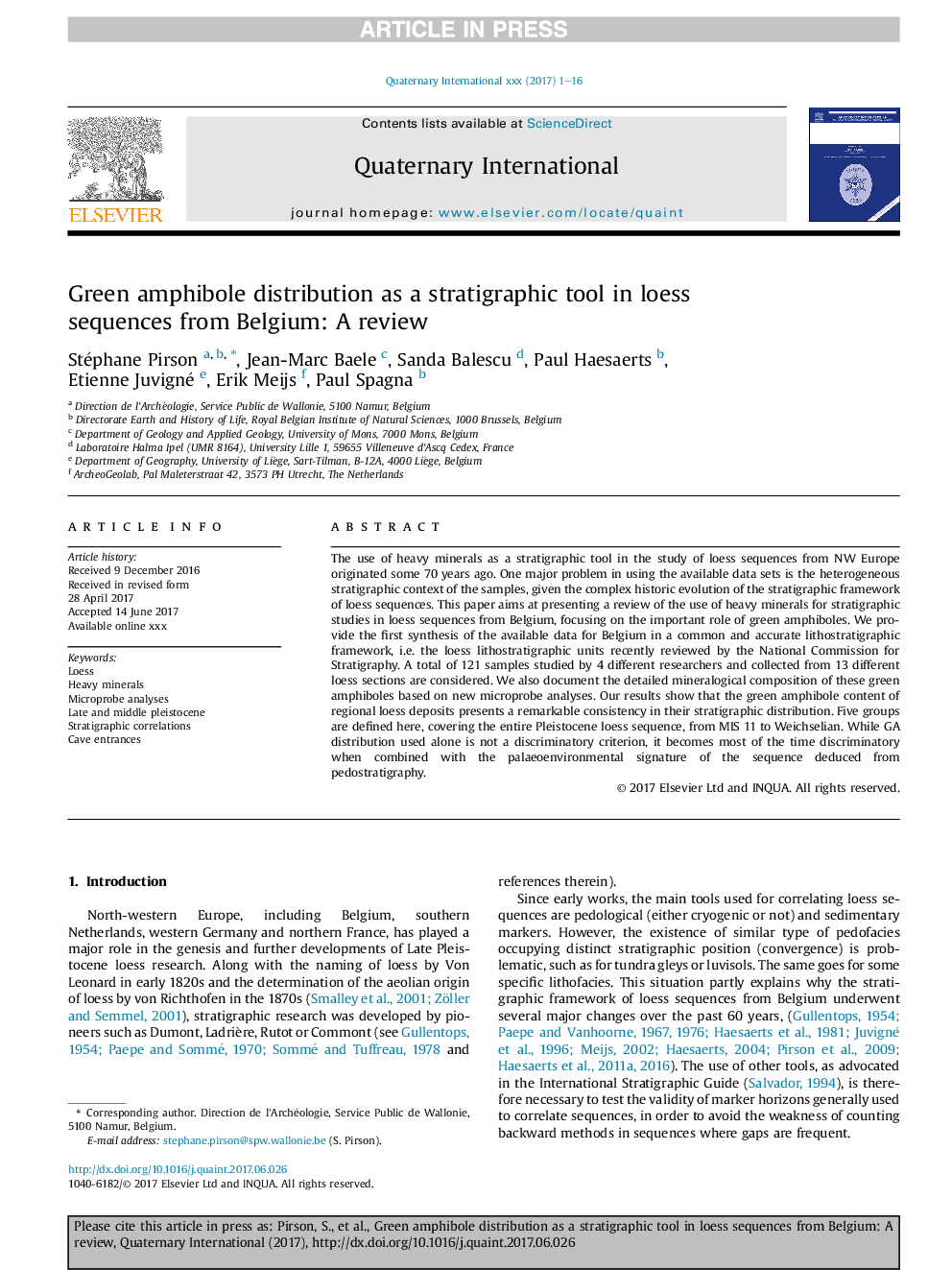| Article ID | Journal | Published Year | Pages | File Type |
|---|---|---|---|---|
| 7449092 | Quaternary International | 2018 | 16 Pages |
Abstract
The use of heavy minerals as a stratigraphic tool in the study of loess sequences from NW Europe originated some 70 years ago. One major problem in using the available data sets is the heterogeneous stratigraphic context of the samples, given the complex historic evolution of the stratigraphic framework of loess sequences. This paper aims at presenting a review of the use of heavy minerals for stratigraphic studies in loess sequences from Belgium, focusing on the important role of green amphiboles. We provide the first synthesis of the available data for Belgium in a common and accurate lithostratigraphic framework, i.e. the loess lithostratigraphic units recently reviewed by the National Commission for Stratigraphy. A total of 121 samples studied by 4 different researchers and collected from 13 different loess sections are considered. We also document the detailed mineralogical composition of these green amphiboles based on new microprobe analyses. Our results show that the green amphibole content of regional loess deposits presents a remarkable consistency in their stratigraphic distribution. Five groups are defined here, covering the entire Pleistocene loess sequence, from MIS 11 to Weichselian. While GA distribution used alone is not a discriminatory criterion, it becomes most of the time discriminatory when combined with the palaeoenvironmental signature of the sequence deduced from pedostratigraphy.
Keywords
Related Topics
Physical Sciences and Engineering
Earth and Planetary Sciences
Geology
Authors
Stéphane Pirson, Jean-Marc Baele, Sanda Balescu, Paul Haesaerts, Etienne Juvigné, Erik Meijs, Paul Spagna,
